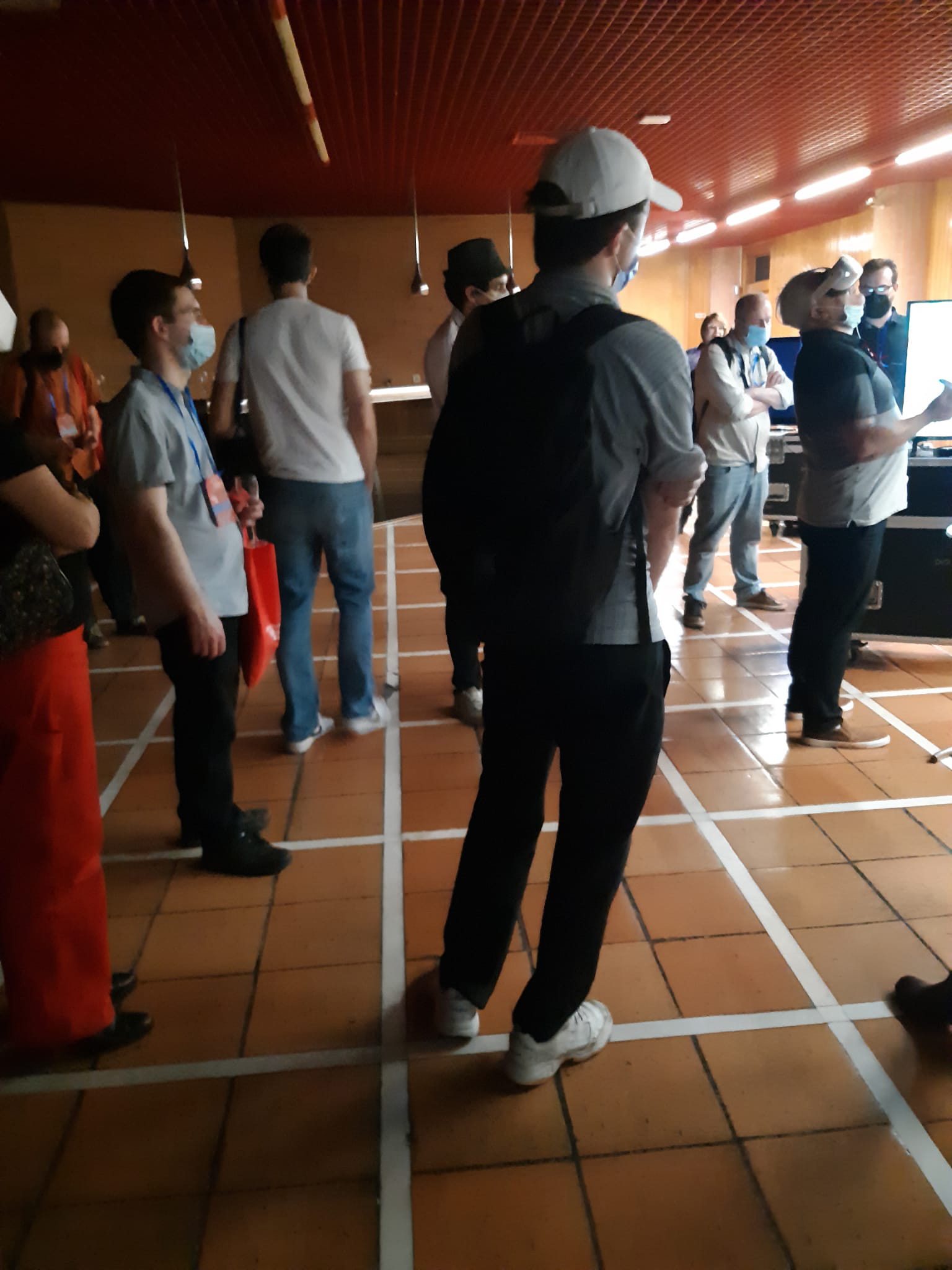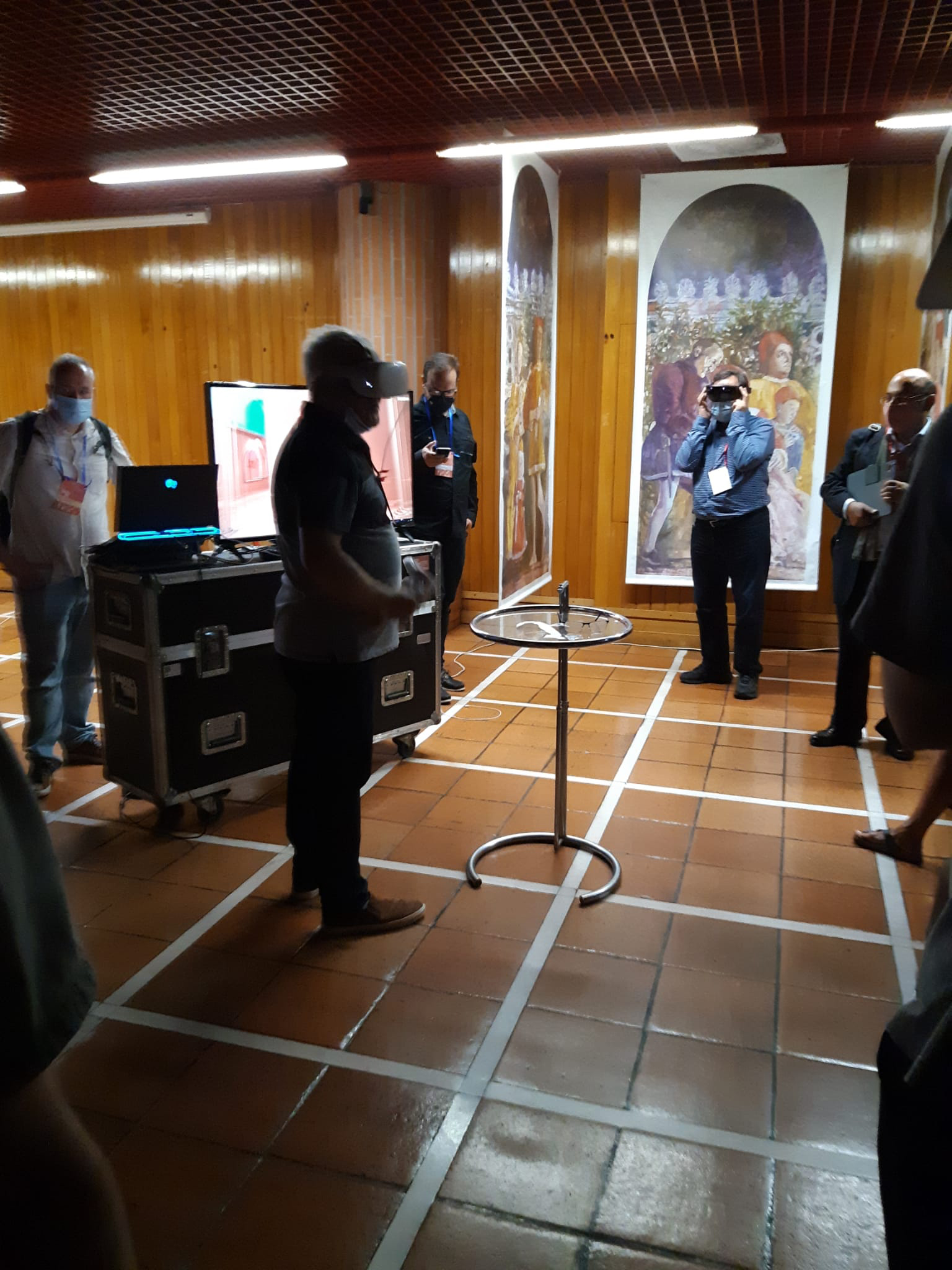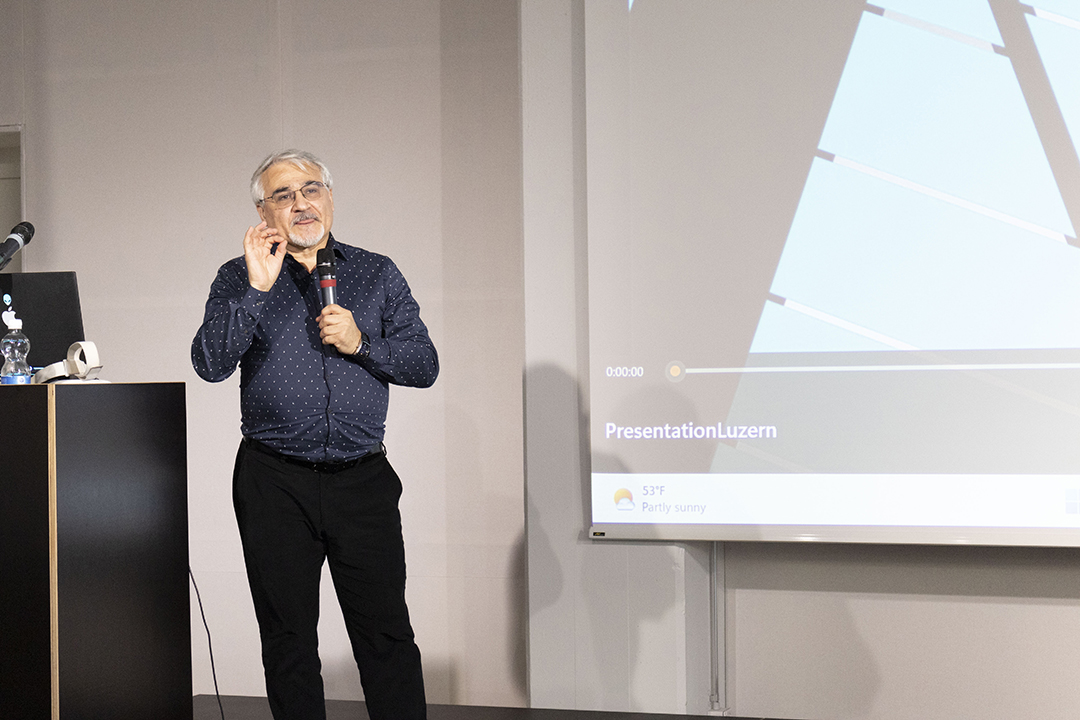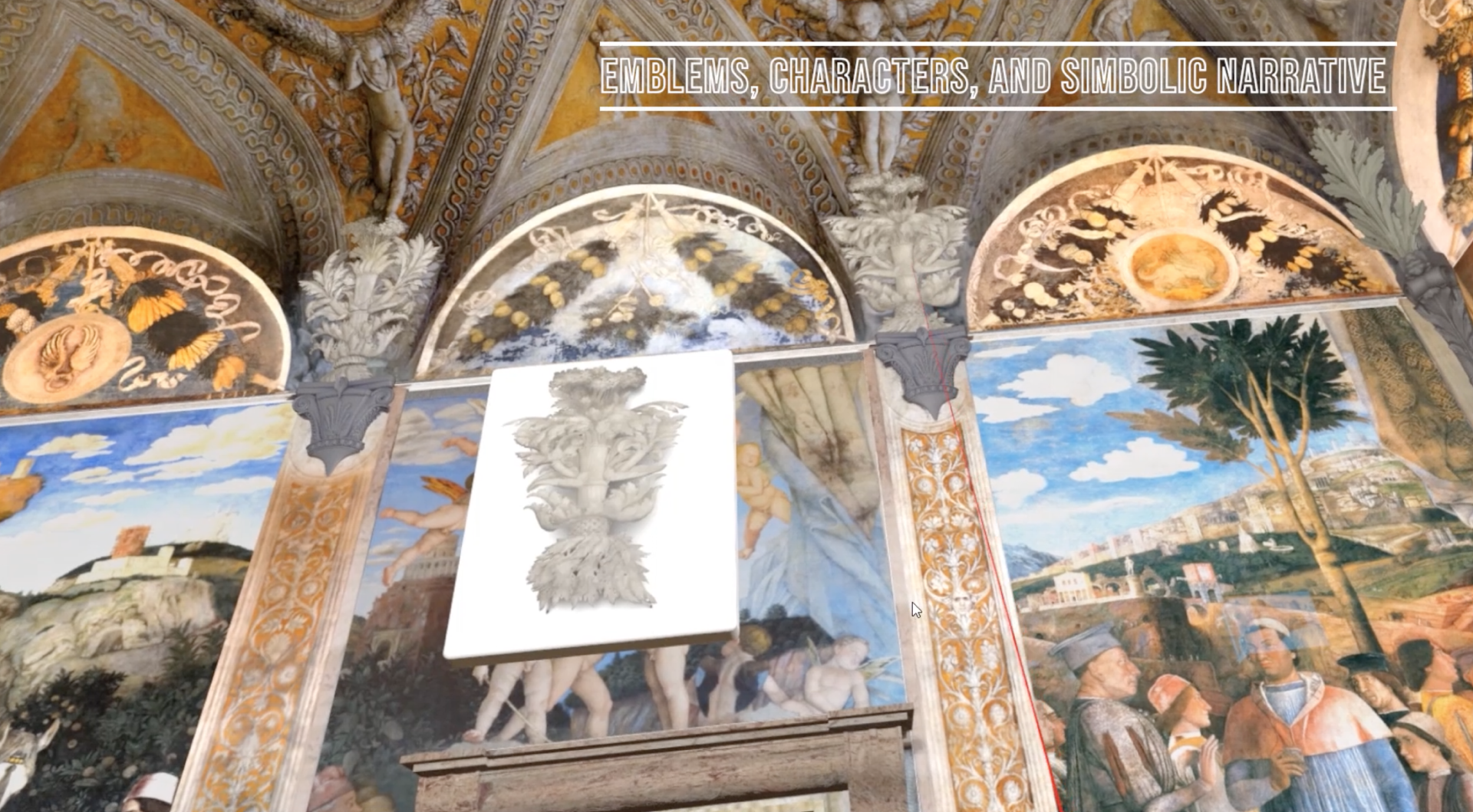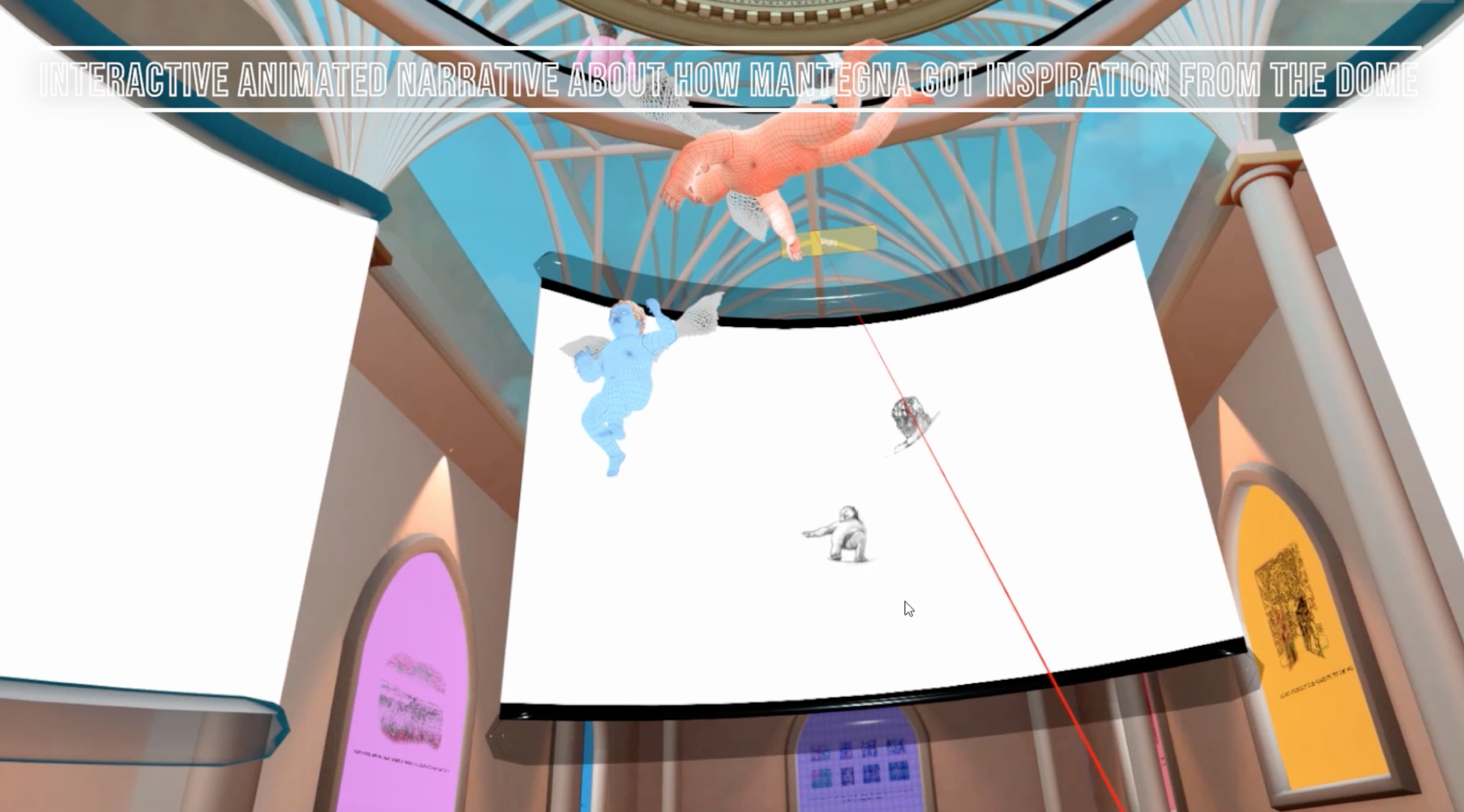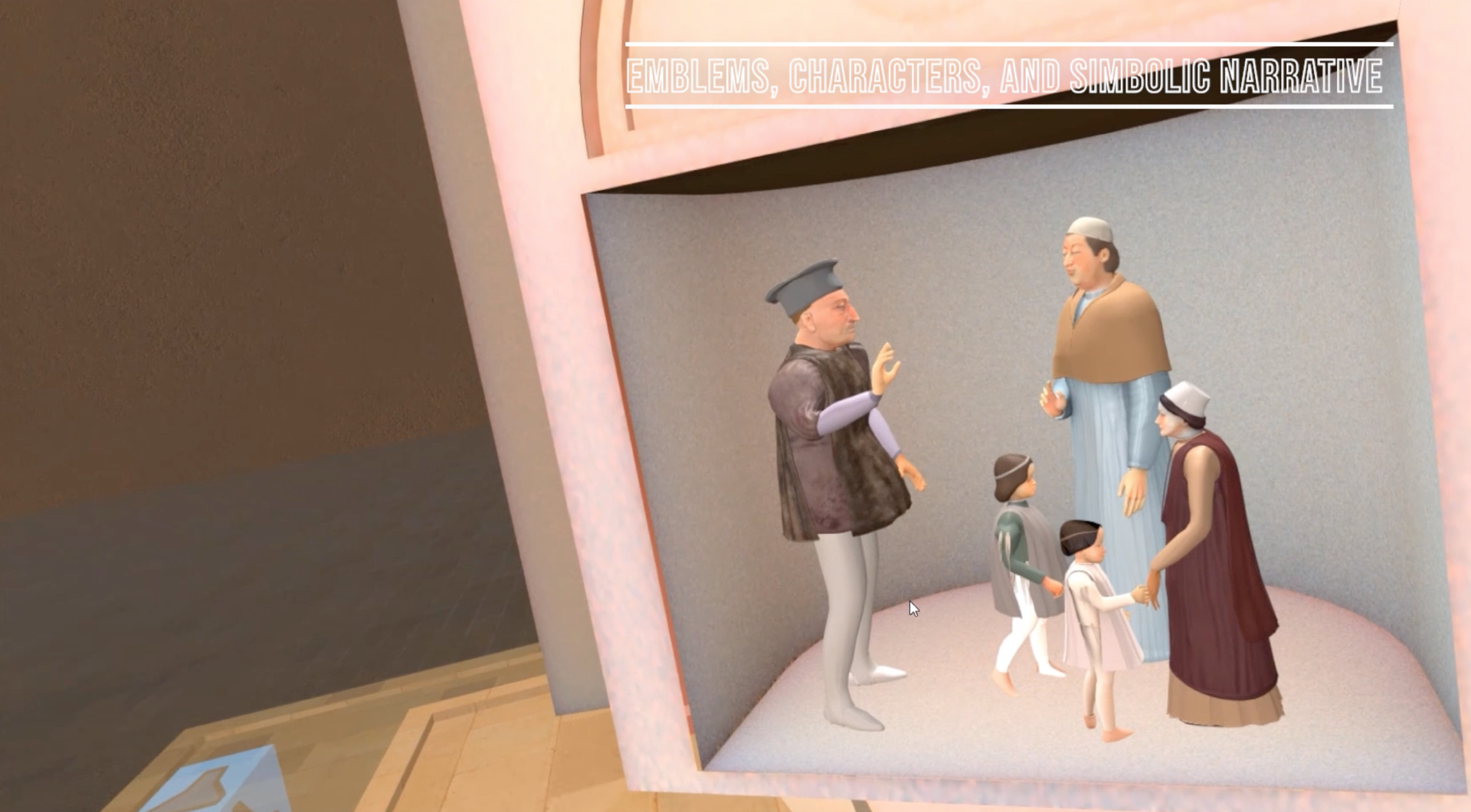The Wedding Chamber Installation
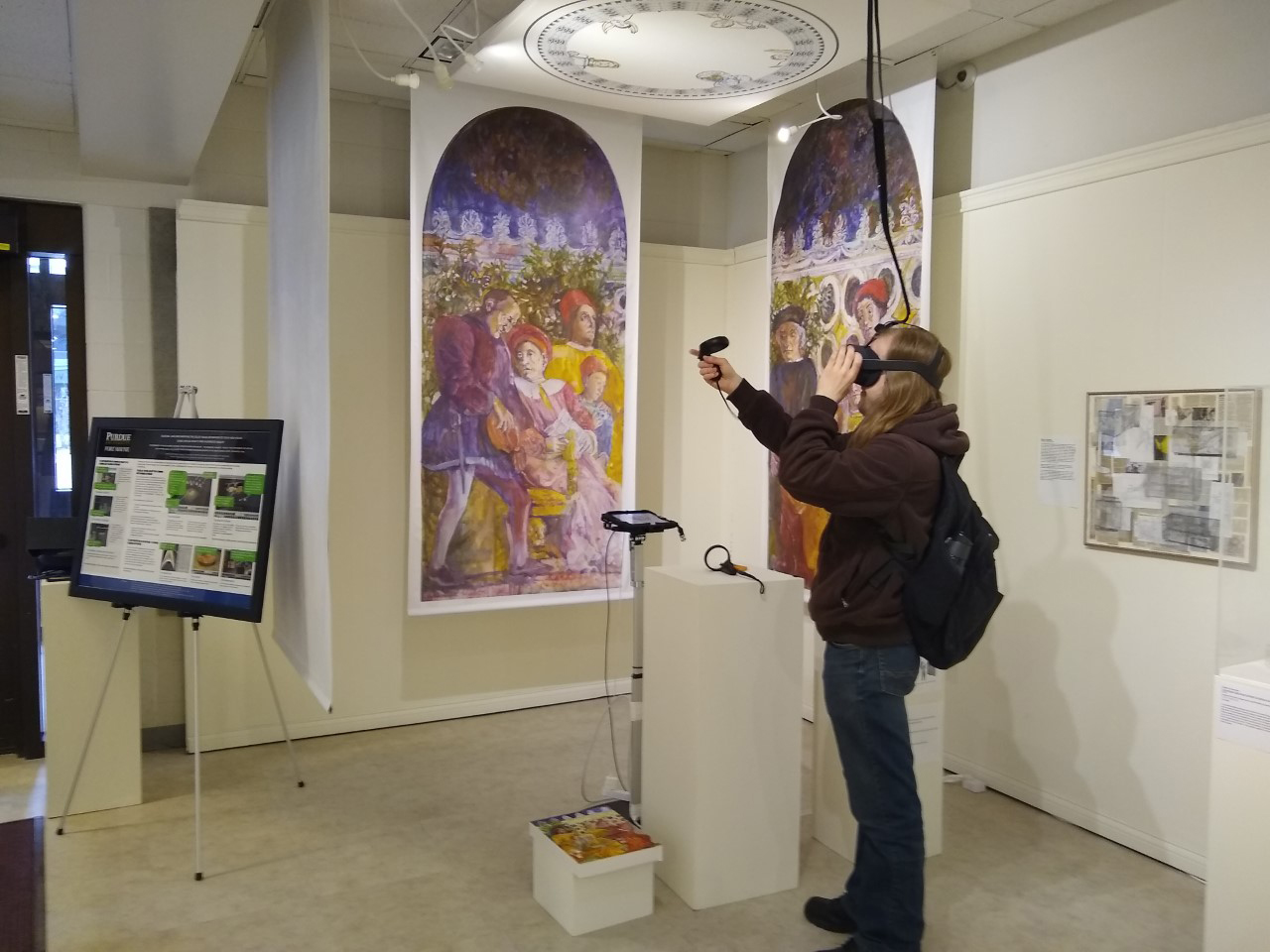
The “Pictorial and Virtual simulation of Andrea Mantegna’s Fresco the Wedding Chamber through a mixed reality environment installation,” is a project that has had almost 5 years of development. The constant observation of the device’s manipulation by users, the responses obtained from its computing processes, the efficient access and usability of the head-ups displays within headsets, and the body’s performance as phenomenological mediation between the hardware and the software architecture of the immersive computer program world, are in a study process to obtain significant conclusions about how an immersive interactive installation must be implemented utilizing emerging technologies for visualization in manners that do not rollover to mass media spectacle, or remaining just a curiosity novelty without getting feedback from peers, concerning cultural and academic scrutiny. This article explains the practical implementation of an experience tied to an immersive installation which is essentially incorporating all the required building blocks that emerging technologies possesses, to develop an immersive artwork through “Presence” i.e., the ability of a user to feel that they are in virtual location.
The fundamental goal of this installation was to create the reenactment of “La Camera Degli Sposi,” “Camera Picta,” or known as well as “Wedding Chamber” through a simulated rendition of Augmented Reality/Virtual Reality (mixed reality), to study the illusionistic space used by Andrea Mantegna in the real fresco located in Mantua, Italy. This reenactment has been achieved by an install based on a collapsible and portable banners display, keeping the virtual space coordinates and measures, in terms of immersion, following of the original room layout located at the Saint Giorgio Castle in Mantua, Italy. This immersive environment renders a conceptual development of the original fresco painted with mixed traditional media on its walls and ceiling. This interpretation of the real fresco maintains its compositional structure through outlines and color deconstruction, just keeping the factual depiction of the oculus in the ceiling as a full reproduction of the original piece.
The painted elements are associated or glued to a digital content of mixed reality as image targets. Whenever a mobile device or wearable headset device (Microsoft HoloLens, Oculus Quest 2, HTC VIVE, iPad) points at the painted elements (targets) on the walls, they display the holographic configuration of the fresco’ scenes on the screen with fully animated details and enhancing the augmenting experience in HD cinematic realism.
